- 微信公眾號(hào)

政策解讀
- 微信小程序
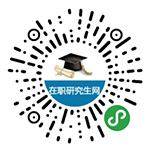
快速擇校

政策解讀

快速擇校
三、圖表作文
圖表作文與寫(xiě)議論文和說(shuō)明文的寫(xiě)作方法大致相同,唯一的差異就是如何利用濃縮在圖表中的信息闡明圖中各種數(shù)據(jù)和信息所反映的問(wèn)題。因此考生在寫(xiě)此類(lèi)作文時(shí)只有在看懂圖表的基礎(chǔ)上才能動(dòng)筆寫(xiě)。如果不能全部領(lǐng)會(huì)圖中信息,在寫(xiě)作中就會(huì)出現(xiàn)這樣或那樣的問(wèn)題。因此考生在閱讀圖表時(shí)應(yīng)注意以下兩點(diǎn):
第一,掌握?qǐng)D表上提供的信息及每一欄上面的小標(biāo)題的標(biāo)注,由此弄清設(shè)計(jì)者想通過(guò)圖表反映出的信息、問(wèn)題或現(xiàn)象。
第二,在掌握全部信息的基礎(chǔ)上,著手分析這些信息和表上的具體數(shù)字。通過(guò)分析與對(duì)比,抓住問(wèn)題,便可以開(kāi)拓思路,構(gòu)思文章的布局、段落的劃分及上下文的連貫等。
段落的劃分可根據(jù)內(nèi)容而定。一般第一段應(yīng)對(duì)圖表做一簡(jiǎn)要的概述,點(diǎn)出所要涉及的問(wèn)題;中間段落應(yīng)對(duì)圖表的重要問(wèn)題進(jìn)行分析;結(jié)尾段對(duì)全文做一小結(jié)。
請(qǐng)看下面圖表:
FOODYEAR 1986 1987 1988 1989 1990
Grain 49% 47% 46.5% 45% 45%
Milk 10% 11% 11% 12% 13%
Meat 17% 20% 22.5% 23% 21%
Fruit and Vege tables 24% 22% 20% 20% 21%
Total 10% 100% 100% 100% 100%
審題:
這張圖表介紹了1986年?1990年人們食品結(jié)構(gòu)發(fā)生的變化。食品包括四大類(lèi):糧、奶、肉及水果蔬菜。從圖表上看,糧食消費(fèi)量在逐年下降,奶和肉的消費(fèi)量在上升,可見(jiàn)人民生活水平提高了。蔬菜水果消費(fèi)量下降的原因可否歸結(jié)為物價(jià)上揚(yáng)問(wèn)題。根據(jù)上述分析我們可以將文章分為3?5段。
According to the above table,we can see that some changes have taken place in people′s diet since 1986,which clearly indicates the improvement of people′s living standard.
One of the big changes is the decrease of grain consumption with 49 percent in 1986 and 45 percent in 1990.On people′s dinner tables the traditional dominant food-grain has given some way to milk and meat which were seldom seen on dinner tables before.Since the economic reform in 1978,various kinds of food have become popular in Chinese families.
However,there is a steady reduction of fruit and vegetables with 24 percent in 1986 and a three point drop by 1990.But this is not the main trend.As the living standard of the Chinese people is rising,we look forward to further changes in people′s diet.The proportion of fruit and vegetables as well as milk and meat will definitely increase in the coming yesrs.
四、寫(xiě)摘要
摘要寫(xiě)作是一種實(shí)用的寫(xiě)作技能。寫(xiě)摘要就是要用簡(jiǎn)潔的語(yǔ)言概述一個(gè)問(wèn)題、事件或觀點(diǎn)。它的用處十分廣泛,在寫(xiě)論文、報(bào)告、總結(jié)或演講稿時(shí)都需要這一技能。
摘要的特點(diǎn)是簡(jiǎn)明扼要,因此寫(xiě)摘要時(shí)要對(duì)全文進(jìn)行選擇取舍,抓住重點(diǎn),突出新觀點(diǎn),強(qiáng)調(diào)文章的目的和主要結(jié)論。
要寫(xiě)好摘要,應(yīng)注意以下三方面:
第一,要理解原文,了解原文的總體結(jié)構(gòu)和主導(dǎo)思想以及作者的意圖。
第二,要確認(rèn)每一段的主題句及重要細(xì)節(jié)。
最后,要注意全文的結(jié)尾,因?yàn)樽髡叱T诮Y(jié)尾歸納總結(jié)全文或重申主題。
選擇取舍也是寫(xiě)好摘要的關(guān)鍵。一般的細(xì)節(jié),冗長(zhǎng)的說(shuō)明,修飾成分等可刪節(jié)或簡(jiǎn)化。摘要不僅要簡(jiǎn)潔,還應(yīng)(和其他文章一樣)完整流暢。
原文:
The whole process of summarizing implies an ability to make decisions.You have to decide what the author′s plan is,how the material has been organized,what the key ideas are,and what material is used merely as example.You will not find the technique of summarizing easy at first because it requires so many decisions.But your efficiency in making summaries,as well as your general reading efficiency,will increase in proportion to the time and effort you spend on perfecting your notetaking technique.
第一段的中心思想指出寫(xiě)摘要的過(guò)程是檢查一個(gè)人的閱讀理解水平的過(guò)程。它包括對(duì)文章總體結(jié)構(gòu)的掌握,對(duì)主題思想的理解。(注意:本文的重點(diǎn)是寫(xiě)摘要,因此本段涉及的"決策能力"可以不提。)
Your final summary should reflect clearly and accurately what the author has said.An inaccurate summary may be worse than no summary at all.An effective method of testing the quality of your summary is to set it aside for a month or two and then reread it.If it still recalls the essential information for you and seems to express the material in a clear and exact manner,you have done a good job.If it does not,make another attempt.This time you will do a better job.This method,incidentally,may well be applied to other types of writing.Many young writers have been advised to put their material aside for a while.If a piece of writing seems as good a year or two later as the day they finished it,they can begin to feel that it will stand the test of time.The same thing,of course,applies to what someone else has written and you have read.If you think a book you read several years ago was the best you have known,reread it.Don′t be surprised if you find yourself sadly disappointed.
第二段的主要觀點(diǎn)是摘要應(yīng)簡(jiǎn)潔準(zhǔn)確。如果寫(xiě)得不好,就不能接受時(shí)間的考驗(yàn)。段中列舉幾個(gè)事例都是為了說(shuō)明上述觀點(diǎn),寫(xiě)摘要時(shí)可刪去。
Good summaries serve many purposes.Everyone,from professional to houseperson,needs and uses them.Doctors may have to summarize a report of their findings in a particular case for a medical board.They will have to read the summaries of other doctors and summaries of the latest medical research in their field.Lawyers need to prepare a summary,or brief,of their case before they present it in court.Their summary usually takes the form of a sentence outline,and many an early career is hurt by an inability to present a clear and accurate brief.A junior executive may write a summary of a long report for the president of the company.Electrical engineers will summarize their findings to formulate their plans.A student prepares summaries for use in a term paper.
第三段的中心思想表達(dá)了寫(xiě)摘要的廣泛用途。
摘要:
The ability to write summaries reflects one′s reading comprehension level.If one has a better understanding of the structure of an article and a better grasp of the main idea,he can write the summary efficiently.Moreover,a summary,if accurate and well?written,can stand the test of time.Many professions require their staff to possess the ability of writing summaries such as doctors,lawyers,junior executives and students.
特別聲明:①凡本網(wǎng)注明稿件來(lái)源為"原創(chuàng)"的,轉(zhuǎn)載必須注明"稿件來(lái)源:育路網(wǎng)",違者將依法追究責(zé)任;
②部分稿件來(lái)源于網(wǎng)絡(luò),如有侵權(quán),請(qǐng)聯(lián)系我們溝通解決。
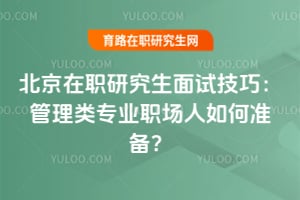
管理類(lèi)專業(yè)職場(chǎng)人報(bào)考北京在職研究生時(shí),面試環(huán)節(jié)是職業(yè)進(jìn)階的關(guān)鍵挑戰(zhàn)。本文聚焦北京在職研究生面試技巧,為職場(chǎng)人量身定制高效準(zhǔn)備方案,涵蓋自我介紹的精煉表達(dá)、專業(yè)知...
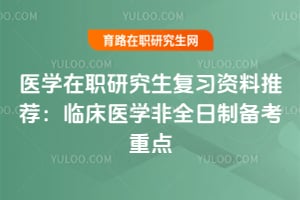
本文針對(duì)臨床醫(yī)學(xué)非全日制研究生考生,推薦高效復(fù)習(xí)資料和實(shí)用備考策略。深入解析臨床醫(yī)學(xué)專業(yè)核心考點(diǎn),提供權(quán)威教材、在線課程和模擬試題資源,幫助在職人員克服時(shí)間緊張...
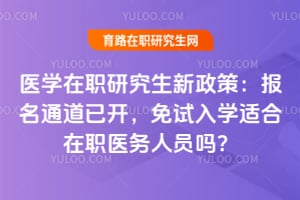
醫(yī)學(xué)在職研究生新政策已全面實(shí)施,報(bào)名通道正式開(kāi)放,免試入學(xué)機(jī)制成為焦點(diǎn)。在職醫(yī)務(wù)人員面臨新機(jī)遇:免試入學(xué)是否適應(yīng)其工作節(jié)奏與學(xué)習(xí)需求?文章深入解析政策核心內(nèi)容,...
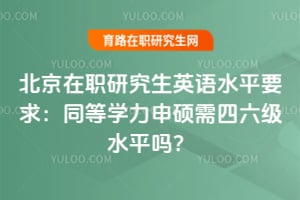
北京在職研究生英語(yǔ)水平要求是許多在職人員關(guān)注的焦點(diǎn),特別是同等學(xué)力申碩申請(qǐng)者。許多人疑問(wèn):同等學(xué)力申碩是否需要四六級(jí)水平證書(shū)?本文將深入解析北京地區(qū)在職研究生英...
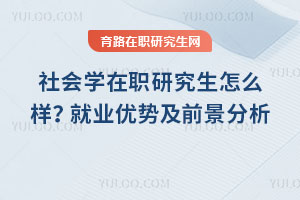
社會(huì)學(xué)在職研究生怎么樣?社會(huì)學(xué)在職研究生培養(yǎng)社會(huì)調(diào)研等實(shí)用技能,課程靈活,門(mén)檻友好,證書(shū)國(guó)家認(rèn)可。就業(yè)優(yōu)勢(shì)明顯,在體制內(nèi)利于晉升,企業(yè)中跨部門(mén)需求大,社會(huì)組織是...

工學(xué)在職研究生適合哪類(lèi)人群?適合4類(lèi)人群。技術(shù)攻堅(jiān)型,可突破職業(yè)天花板;管理躍遷型,助力技術(shù)轉(zhuǎn)管理;跨界轉(zhuǎn)型型,實(shí)現(xiàn)跨行業(yè)進(jìn)入高增長(zhǎng)領(lǐng)域;證書(shū)剛需型,滿足職業(yè)資...
在職研究生
入學(xué)考試
在職研究生
有用嗎
在職研究生
如何報(bào)考
在職研究生
報(bào)考流程
在職研究生
報(bào)名條件
在職研究生
學(xué)費(fèi)一覽表
在職研究生
考哪些科目
在職研究生
怎么報(bào)名
在職研究生
一年考幾次
評(píng)論0
“無(wú)需登錄,可直接評(píng)論...”